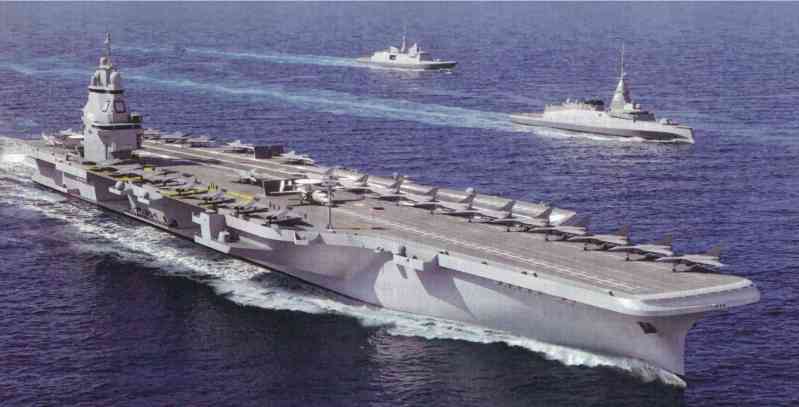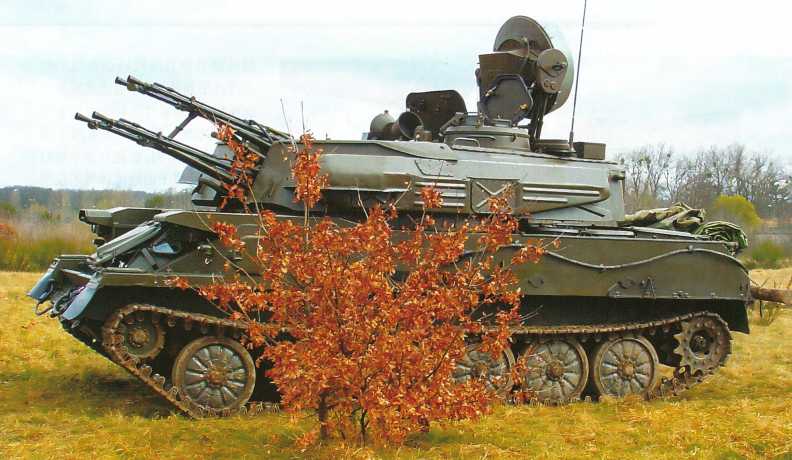The French Navy is updating various naval combat systems at the same time, and there are few navies in the world that can do this. In terms of aircraft carriers, the first batch of long-term projects for the next-generation aircraft carrier PANG was awarded in April 2024; in terms of ballistic missile nuclear submarines, the first SNLE-3G cut the first steel plate in March 2024; in terms of frigates, the first ship of the Defense and Intervention Frigate (FDI) is about to be commissioned; in terms of supply ships, the first ship of the "Jacques Chevalier" class fleet tanker (BRF) has been commissioned. In addition, equipment such as the "Suffren" class attack nuclear submarines are also being delivered continuously. However, the heavy budget pressure brought by the above projects has also weakened the combat readiness of the French Navy to some extent.
The French Navy is the largest maritime force in the European Union, using three major naval bases in Cherbourg, Brest and Toulon. It further benefits from a series of naval stations in France’s overseas colonies, and 6 of the 17 frigates are permanently stationed outside Europe. The French Navy is seen as a highly modern and powerful force, the only navy outside the United States to operate nuclear-powered catapult-launched, arrested-arrested (CATOBAR) aircraft carriers; it has four Triomphant-class strategic nuclear submarines, one of six navies with nuclear-powered ballistic missile submarines. Despite its obvious strength, the French Navy is also a recovering force. Like most navies in the Western world, its funding has generally decreased since the Cold War, and its new ships have emphasized economy and durability rather than lethality, as exemplified by the Floreal-class (1991-1994) and Lafayette-class (1996-2001) corvettes. However, recent innovation and procurement trends show that France is paying close attention to naval developments and intends to design and deploy increasingly powerful and reliable forces in the future - but with limited ambitions to increase the number of ships.
The Russian-Ukrainian conflict, while primarily conducted on land, has had significant impacts on the maritime domain. The Black Sea has been a theatre of intense engagement, with both sides using it effectively to conduct high-level attacks (mostly with missiles and unmanned systems). It is unclear how much this will affect the structure and capabilities of the French Navy, but these actions will at least serve as a reminder of the value of deep strike capabilities at sea, as well as the importance of air defense.
Strategic and doctrinal thinking
The current posture and general arrangements of the French Navy derive from three main documents: the Strategic Study, published in 2017 and updated in 2021; the Military Planning Law (LPM) for 2019-2025; and the equally important Mercator Plan, a document describing the characteristics and objectives of the French Navy until 2030. Together, these documents clarify the mission of the French Navy: to protect French sea lanes; to maintain the reliability of the country’s nuclear posture; to safeguard French interests, and ultimately to contribute to the country’s ability to collect intelligence. In terms of operations, this can be interpreted as a renewed focus on sea lines of communication and choke points, and the need for France to ensure partnerships with important maritime powers, including those outside Europe.
The Military Planning Law specifically states the priorities of the Navy: by 2025, the French Navy must operate 6 nuclear ballistic missile submarines, 6 nuclear attack submarines, 1 nuclear-powered aircraft carrier, 15 "first-class frigates", 3 large amphibious ships, 4 supply oilers with hangars (AORH). 134 aircraft (including 40 fighters, 18 maritime patrol aircraft and 76 helicopters) and 19 patrol ships. These figures are similar to the composition of the French Navy’s fleet in 2018, which also shows the Navy’s conservative posture and the relatively modest capacity growth planned, all subject to funding.
Much like the French Army, the Navy has always maintained a full combat capability. However, operating a nuclear-powered aircraft carrier and a strong nuclear ballistic missile submarine force has already imposed a serious financial burden on the Navy, with serious consequences for the rest of the forces: France’s main surface combat ships generally lack defensive capabilities - especially air defense - and have limited training in the use of complex ammunition. In addition, France’s main surface assets are scattered across the world’s second-largest exclusive economic zone, making the fleet’s operations fast and increasing maintenance costs. The French Navy remains a powerful force, but like its European counterparts, it lacks the large ammunition inventory required for sustained operations against peer adversaries.
Platforms and systems in use and under development

Whether the cost of France’s nuclear deterrent force prevents the Navy from investing sufficient resources in much-needed programs remains to be clarified.
The French Navy has been busy with the four major procurement projects shown in Table 1 in the past two years, with a total amount of nearly 27 billion euros. In addition, France is building a new ballistic missile nuclear submarine (SNLE-3G) and has begun developing a new nuclear-powered aircraft carrier, the "New Generation Aircraft Carrier" (PANG), which is ready to replace the "Charles de Gaulle" from 2038. Given that most of the French Navy’s budget has been occupied, according to reports in 2023, France will adopt a more ambitious new plan. According to the 2024-2030 Military Planning Law, the military budget will increase by 3 billion to 4 billion euros each year, and France’s annual military expenditure will increase to 69 billion euros by 2030. The French military will receive a total of 413 billion euros in 7 years, including an additional budget of 13 billion euros to assist Ukraine.
The French Naval Aviation is also busy rebuilding its capabilities: it retired the last of its Dassault Super Etendard fighters in July 2016 and currently operates 42 Rafale M fighters, 22 Atlantic 2 (ATL2) maritime patrol aircraft (18 of which are being modernized and will be used until 2030) and three E-2C Hawkeye early warning aircraft. In addition to these aircraft, the Naval Aviation has approved the purchase of seven Falcon 2000LXS (with an option to purchase an additional five) to replace the aging fleet of maritime surveillance aircraft. However, the most pressing need at present is to determine how to replace the aging ATL2 fleet: originally this was part of the joint Franco-German MAWS anti-submarine patrol aircraft project, but Germany’s decision to purchase at least five P-8A Poseidon patrol aircraft from the United States has led France to consider a purely domestic solution, with Dassault’s Falcon 10X being a likely candidate.
Another key aspect of France’s maritime domain efforts hinges on future missile selection. The French Navy currently relies on the Aster family of missiles for air defense, and will likely deploy its latest iteration, the Aster 30 Block 1NT, to enhance its ballistic missile defense capabilities. It is also rumored that the French Navy is considering integrating the MBDA Mica VL short-range ground-based air defense system onto its main surface combatants to provide a cost-effective low-altitude threat countermeasure capability. This further rationalization of French naval air defenses will also benefit from the introduction of the RAPIDFire close-in weapon system, which is intended to provide another means of countering drones, light aircraft and missiles with its future Anti Aerial Airburst (A3B) munitions.
As for surface warfare, France still relies heavily on the Exocet family of anti-ship missiles, especially the latest Exocet Block 3. However, updating this capability after the Exocet reaches the end of its life expectancy is part of a larger Franco-British-Italian initiative, the Future Cruise and Anti-Ship Weapons (FC/ASW). The systems designed and procured within the framework of this program will gradually replace France’s Exocet anti-ship missiles and MdCM naval cruise missiles, helping to establish commonality between Europe’s two largest navies.


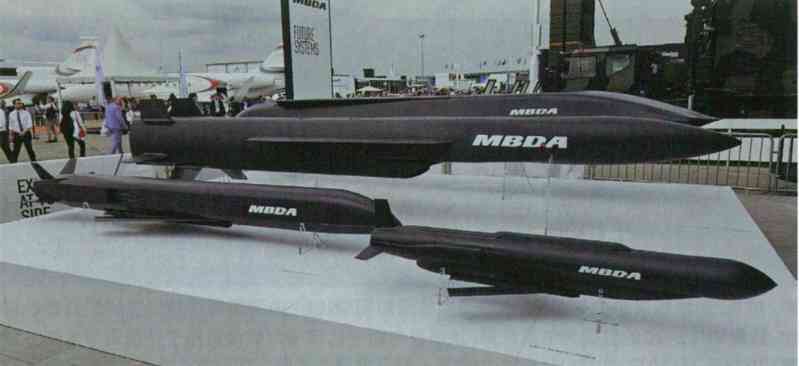
Innovation imperatives
France’s decision to release its first Seabed Combat Strategy in February 2022 has drawn more attention to the country’s efforts to procure unmanned submersibles and autonomous underwater vehicles. Despite limited funding, these efforts will enhance French capabilities in two key complementary parts of the operational spectrum: the acquisition of surface systems capable of deploying unmanned underwater vehicles under the Future Hydrographic and Oceanographic Capability (CHOF) program, and mine warfare assets within the framework of the Future Countermeasures System (SLAM-F). Perhaps most importantly, these programs will give France assets capable of operating at depths of 6,000 meters, an important capability given that France’s current Ulisse and Diomede remotely operated submersibles are only capable of operating at depths of 1,000 and 2,000 meters, respectively.
Another priority for the French Navy is the integration of unmanned aerial vehicles (UAVs) throughout the fleet. Starting with the Mercator program, the French Navy has committed to deploying one UAV on each asset by 2030, and so far three systems have been tested: Siebel’s Camcopt S-100, Airbus Helicopters’ VSR 700 and Helicopter Surveying’s 2000 DVF Aliaca. These drones are tasked with performing observation and surveillance operations that would otherwise require helicopters, and are seen as a cost-effective way to increase the fleet’s capabilities. However, the French Navy is still struggling to identify a partner that can provide proven, economical and French production, and may choose a European supplier to meet some of the UAV needs within the framework of the "Navy Unmanned Aerial System" (SDAM). The French Navy is also involved in similar projects for lighter and cheaper drones under the "Navy Small Unmanned Aerial System" (SMDM) program.
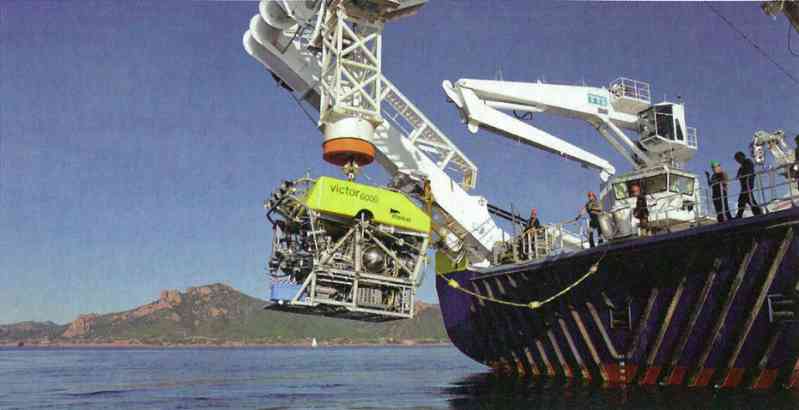
Finally (but not least), France is considering securing an order for a number of medium-altitude, long-endurance unmanned aerial vehicles (MALE UAVs) to complement the future Falcon 2000 LXS, thus adding the dimension of unmanned systems to the renewal of its fleet of maritime surveillance aircraft. The French Navy is said to be considering, among other candidates, Safran’s Patrolman M and Airbus’ Eurodrone, but delays in the latter’s design and construction and its high cost are likely to make it unconvincing.

Multi-domain approach in the naval field
The increasing interdependence of various domains has prompted the French Navy to improve its multi-domain combat approach and establish a command structure that can coordinate the resources of various services.
In this regard, the Indo-Pacific region is a suitable multi-domain combat test field: the scarcity of assets and high operational needs have also played a role in promoting the integration of various services. In addition to the United States, other countries also have the ability to carry out multi-domain integration, which may force France to adjust its thinking and not only encourage cross-service coordination, but also integrate multinational exercises, operations, and exercises with allies and partners.
At this point, France’s traditional emphasis on strategic autonomy and freedom of action limits its ability to interact with allied forces at sensitive levels, including quickly sharing high-value intelligence or establishing built-in dedicated communication lines. This will not prevent American ships from accepting French command or vice versa, but deeper integration of foreign systems on French warships will be more difficult than in other navies around the world.
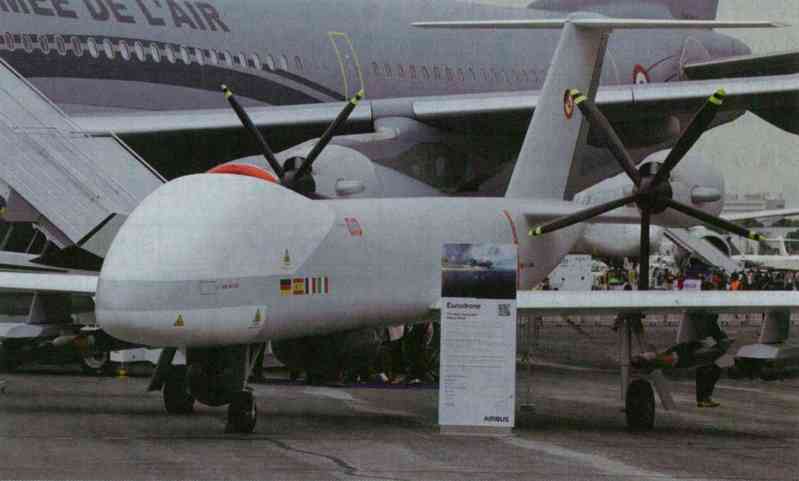
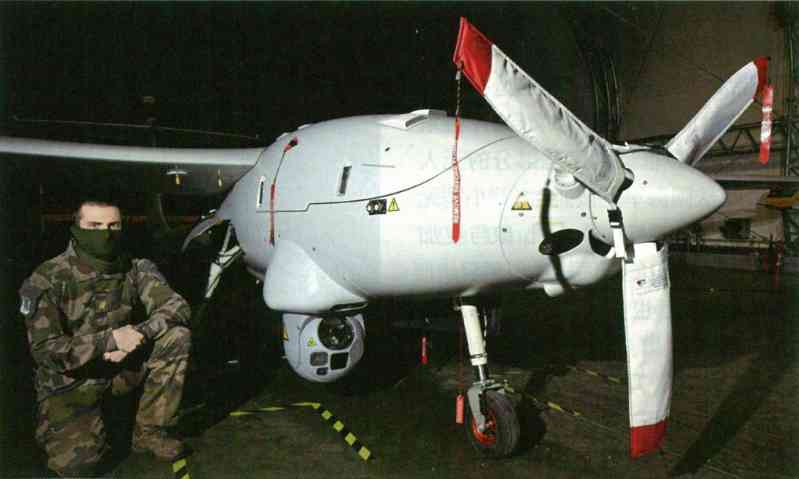
Conclusion
The French Navy, which has invested heavily in updating its main capabilities, is now at a crossroads. In the decades since the end of the Cold War, it has established itself as a modern and powerful force. It has also proven its value and capabilities in a variety of different operations and frequent deployments - acting alone when appropriate and necessary, but often with partners and allies, winning popularity for its emphasis on interoperability and maritime cooperation. The French Navy enjoys the support of a mature defense industrial base and has also benefited from its decision to work with European partners, especially Italy, to address the rising costs of modernizing naval systems. This effort is likely to continue in the future, as part of the European Patrol Ship (EPC) Permanent Structured Cooperation (PESCO) program, which has been funded by the European Defense Fund and has formed a group of European countries. However, the French Navy is not invulnerable: it has adopted a relatively conservative approach to maritime innovation, which has limited its capabilities in part due to funding constraints, resulting in delays in integrating unmanned autonomous systems within the fleet. It has also led the French Navy to prioritize the acquisition of modern major surface combatants, while its light frigates and patrol ships are rapidly aging, further compromising its ability to cover low-end operations, especially in the vast ocean areas outside the French mainland. Recent developments in naval warfare, including but not limited to the sinking of the Russian cruiser Moskva, have accidentally exposed one of the French Navy’s main deficiencies: the fleet’s limited anti-missile capabilities, lack of training in the use of complex munitions, and insufficient inventory. Addressing these issues will require reallocating funds or increasing naval resources - something France will soon have an opportunity to consider when drafting its 2024 budget proposal, but more importantly the 2024-2030 Military Planning Law, which was passed in August 2023.


